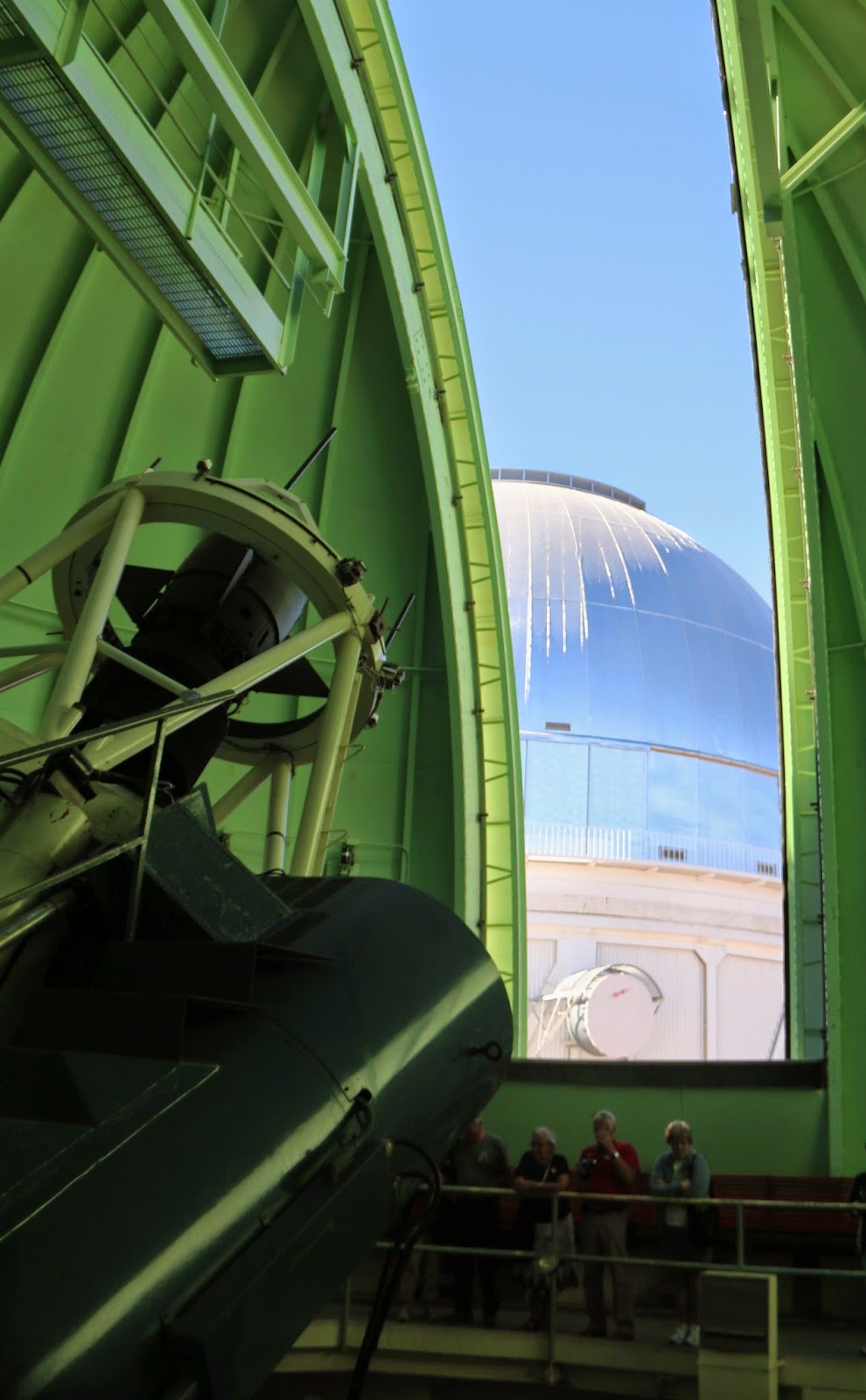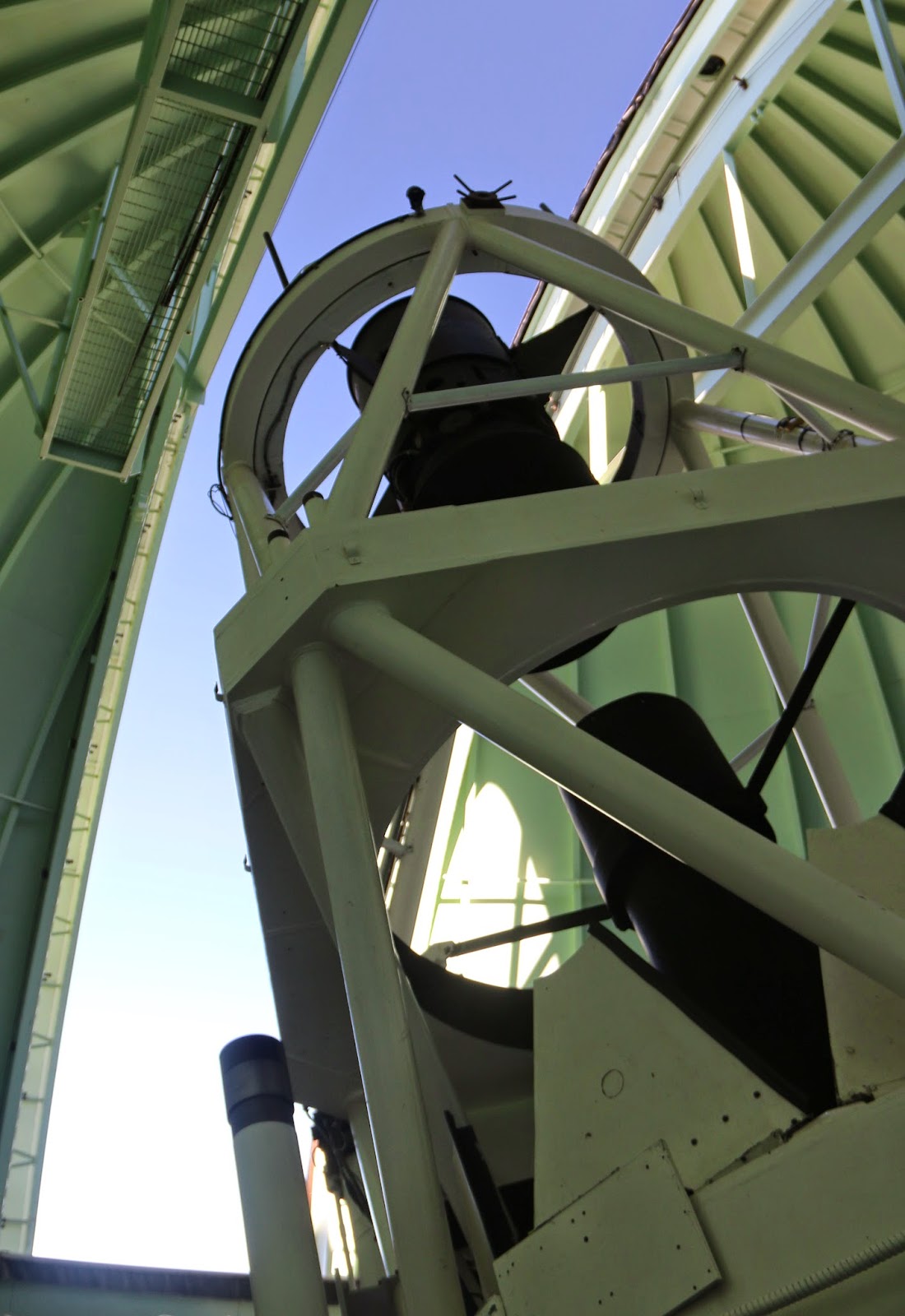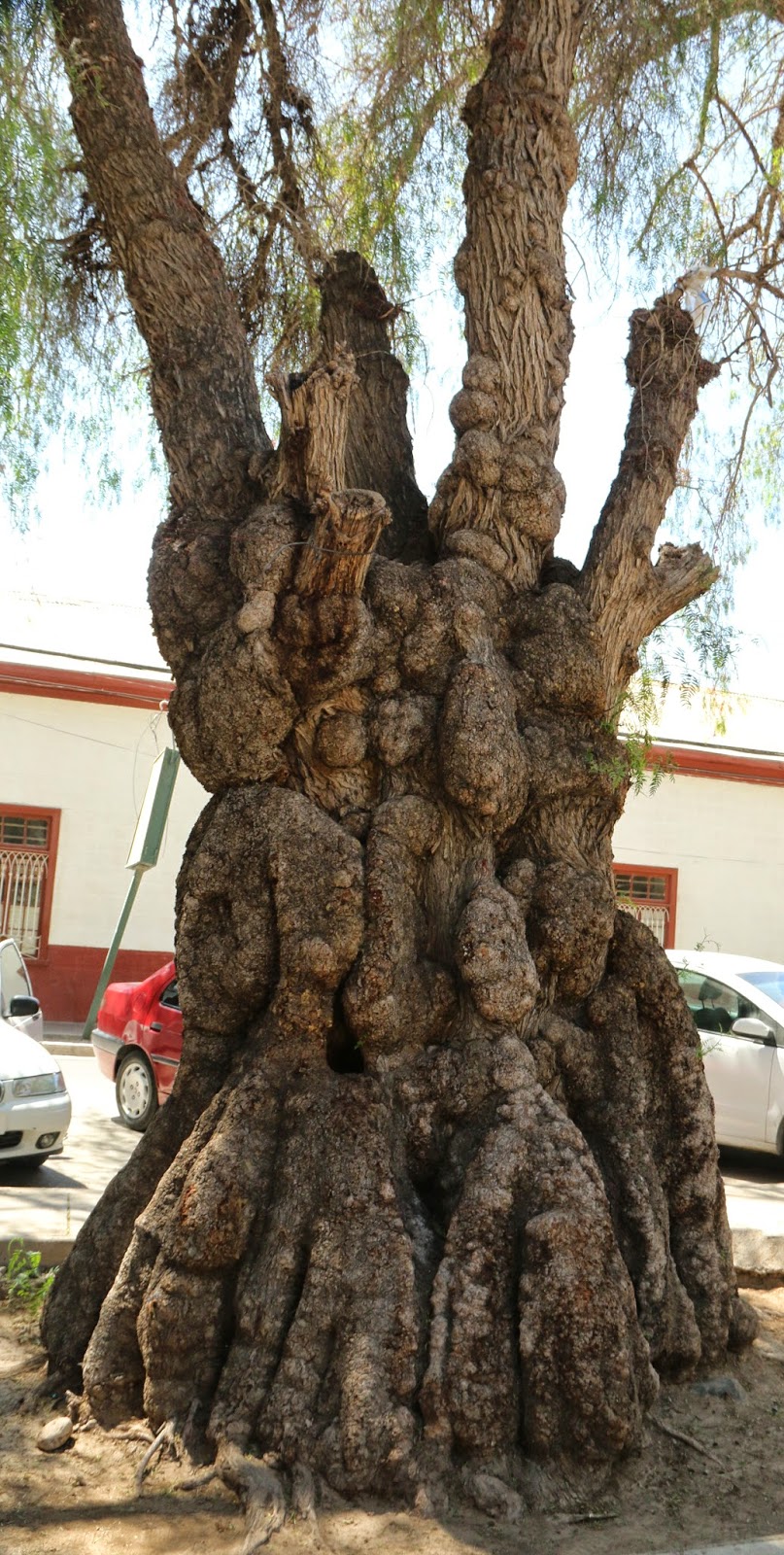It was a big day, Sunday, March 15. We put in at Coquimbo, Chile, the only port
in the region, but more than large enough to handle our big, beautiful, bold
Golden Princess. She was receiving all
of the attention as when the cruise ships come in here they do not work cargo
or export ships. The city of Coquimbo was
established in 1577, and is a Peruvian word meaning city of quiet water. The area is famous for three things … Pisco,
of course, stars and Gabriela Mistral, the first woman to win the Nobel Prize
in the 1950s.
Our excursion today was … yay … another bus ride. Ugh!!!
Except that this time we were going to the Tololo Observatory, located
about 6,000 feet above the ocean in the foothills of the Andes Mountains.
The bus ride took us through some very nice areas, including
La Serena the second oldest city in Chile established in 1544, second after
Santiago in 1536. The first houses were
built of red-and-white-colored adobe but the earthquakes made them realize that
adobe could not survive some of the earthquakes they get.
They grow five varieties of grapes for the Pisco and they
may mix all or just some of them depending on the variety of Pisco. They use lemon and sugar and while some
countries also use eggs in their Pisco, they do not here. I still didn’t intend to taste any more of
it. It was also interesting that they
can make it with up to 50 percent alcohol although mostly they only make it 37
percent … because a higher alcohol content is taxed higher.
Of more interest is that they grow lettuce, and lots of
potatoes, harvesting them four times a year versus the usual one or two times. Chile also produces a lot of papaya, but they
are smaller in size than the ones we’re used to eating. They use a drip irrigation system for their
crops, using tubes with holes in them winding through the plants.
Chile is the number one exporter of copper in the world (but
I had still wanted Lapis over copper), has 15 regions and six main cities, of
which we would travel through three, again traveling on the Pan American
Highway. By the time we’re done with
this trip I may have been on quite a bit of it.
We quickly left the city and were heading through the
Atacama Desert and encountered a variety of cactus and a few trees, but no
animals. We don’t understand why there
aren’t more animals here in South America … at least where we’ve been.
.JPG) |
| You'd think you were in Nevada or Arizona. |
.JPG) |
| The mountains are beautiful here once you've left the lower areas. |
This area is also suffering from a drought, which was quite
evident from the landscape. The dams here
are practically empty at about 6 percent capacity, leaving them with only about
a year’s worth of water.
We were traveling by the Elqui River although there wasn’t
much water, and into the rolling hills of the Elqui Valley. Elqui means the sound of the Andes because of
the wind rustling through the leaves. It’s
beautiful, but so barren.
.JPG) |
| Once again I could have been in the U.S., as this reminds me of Utah. |
.JPG) |
| The road to the observatory, dusty and winding. |
The Totolo Observatory is high in the mountains, and we
wandered winding roads that were paved.
We stopped at a station where we provided the information necessary to
go through and up to the observatory.
And then it was a dirt road, but a very good one. It wound through the hills and back and forth
on switchbacks, taking us higher and higher with every rotation of the bus
tires.
The Totolo Observatory is located where it’s supposedly the
clearest skies in the world. There are
300 nights with no clouds. Many had
looked for a place to build an observatory and in 1962 it was decided to build
here due to the excellent conditions.
The observatory was completed in 1967 and there is a lot of research
done here.
.JPG) |
| These buildings house the two telescopes. |
Totolo has two kinds of telescopes, one with reflectors with
mirrors and one with lenses. They also now use a camera with infrared. We
were taken into the observatory building and up a few flights of stairs. And there was the telescope … a large
needle-looking type of machine. And this
was the small one.
.JPG) |
| You could see the building for the other telescope through the opening of this one. |
.JPG) |
| Looking out to the sky. Beautiful. |
The dome of the observatory rotates and the telescope can also
be rotated around into different positions.
The floor we stood on could rotate around the telescope and be raised and
lowered so there are a lot of options for looking at stars, galaxies, planets
and so much more as was evident from the talk of one of their scientists. All I could think about was that there was
millions of dollars of equipment and we were playing with it, rotating it
around and back and forth.
.JPG) |
| Just me and a big telescope. |
We also visited the larger telescope which was hardly
visible in the building from top to bottom. This one was not a toy. It uses a polished ceramic
that took five years to make. Every two
years they remove the mirrors during the winter and put them into a cleaning
chamber to sweep and vacuum. I didn’t
get the sizes of the telescopes although I believe he said the large one was a
one-meter telescope. There are many that
are much larger today, with the largest mirror at 10 meters being in Spain.
.JPG) |
| I couldn't fit the whole of the second telescope in my camera lens. |
.JPG) |
| But it was a cool thing to see, under it, around it. |
Tololo means in front of the cliff. The observatory was high on the hill, and
there were others around it that were visible to us. It was fascinating to know that we were
seeing history in the making. A month
ago they discovered a dwarf galaxy here that is orbiting our home galaxy, the
Milky Way. And in the past five years they’ve
discovered five planetary systems. There
was so much that I couldn’t take it all in although I took copious notes.
.JPG) |
| Then it was time to head back down the road. |
We also found out that there is a twin telescope in
Tucson. Maybe we’ll see it.
From there we went back down the hill to Vicuna, a small
town of about 25,000, where we had lunch.
Street dogs are in an abundance so I took part of my steak and fed dogs
on our way back to the bus. I then had a
parade of them following me, but I wouldn’t let them on the bus.
.JPG) |
| They were quite well-mannered. No pushing, shoving or growling. My Beagles wouldn't manage well at all here. |
Another interesting item in Vicuna is that there is a red
tower, called Torre de Bauer (Bauer Tower).
Each city has a symbol and this tower is theirs.
.JPG) |
| It was a pretty tower, and quite simple. |
.JPG) |
| There were some beautiful trees and roots along the street. |
.JPG) |
| People use every kind of transportation to sell their goods. |
It was another long day, a tiring day. We needed our rest …
.JPG) |
| But usually we do a lap around the deck to see what's out there. An Inca Tern. |
.JPG) |
| A Pelican. |
.JPG) |
| And interesting boats. |
.JPG)
.JPG)
.JPG)
.JPG)
.JPG)
.JPG)
.JPG)
.JPG)
.JPG)
.JPG)
.JPG)
.JPG)
.JPG)
.JPG)
.JPG)
.JPG)
.JPG)
.JPG)
No comments:
Post a Comment